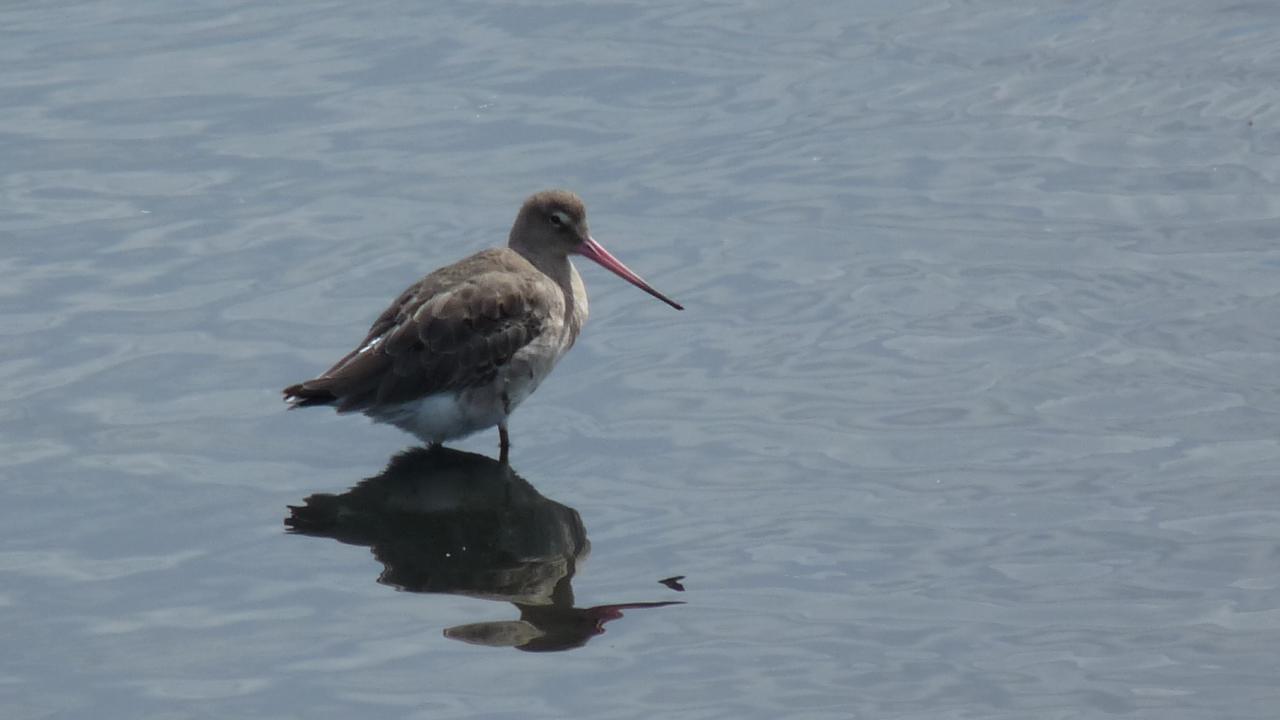Description:
The Black-tailed Godwit (Limosa limosa) looks very similar to the Bar-tailed Godwit (Limosa lapponica), especially when it is not flying.
In flight, however, the Bar-tailed Godwit is easy to recognize by its barred tail (instead of black-tailed), the long white patch on its back (instead of just a small white 'square"), no white wingbars and legs that don't stick out as much as they do with the Black-tailed Godwit.
In addition, the Bar-tailed Godwit has shorter and darker legs than the Black-tailed Godwit and the Black-tailed Godwit has a straight bill while the Bar-tailed Godwit has a slightly upturned bill which is also darker.
In winter plumage, the Bar-tailed Godwit has black stripes on its back and wings which lack on the Black-tailed Godwit.
The Black-tailed Godwit breeds in western and central Europe, while the Bar-tailed Godwit breeds in northern Scandinavia and Siberia and in winter migrates to the coasts of western Europe.
Two subspecies of the Black-tailed Godwit occur in Europe: the nominate subspecies Limosa limosa limosa which occurs in western and central Europe and the subspecies Limosa limosa islandica (also called Icelandic Godwit) which occurs in northern arctic Europe.
Limosa limosa limosa breeds in western and central Europe (especially in the Netherlands), while Limosa limosa islandica breeds almost exclusively in Iceland.
Limosa limosa limosa spends the winter in West Africa and Limosa limosa islandica spends the winter in South and West Europe.
Godwits in the UK in winter are Bar-tailed Godwits and Icelandic Godwits.
Icelandic Godwits are most abundant in the UK at the end of February / beginning of March when they are on their way to their breeding grounds in Iceland.
The bills of Limosa limosa limosa are longer than those of Limosa limosa islandica.
Perhaps the most important distinction is that in Limosa limosa limosa the base of the bill is quite high, so that the beak merges more smoothly into the head; the head therefore looks flatter.
The bill of Limosa limosa islandica sits lower, which makes the head appear much rounder.
The difficulties with identification in the UK only occur in spring and autumn when the three Godwit (sub)species are together in wet grassland areas where they gather for their departure to their breeding/wintering grounds.
Brownsea Island, Dorset, England, 8 August 2009


